
The painting "The Temptation of St. Anthony" by Hieronymus Bosch is a unique and mesmerizing work from the depths of centuries
The painting "The Temptation of St. Anthony" is a work created by Hieronymus Bosch (Jheronimus Bosch) in 1505-1506. It is a triptych consisting of interconnected panels filled with monsters, grotesque and phantasmagorical creatures that tempt the main character and try to make him renounce his faith.
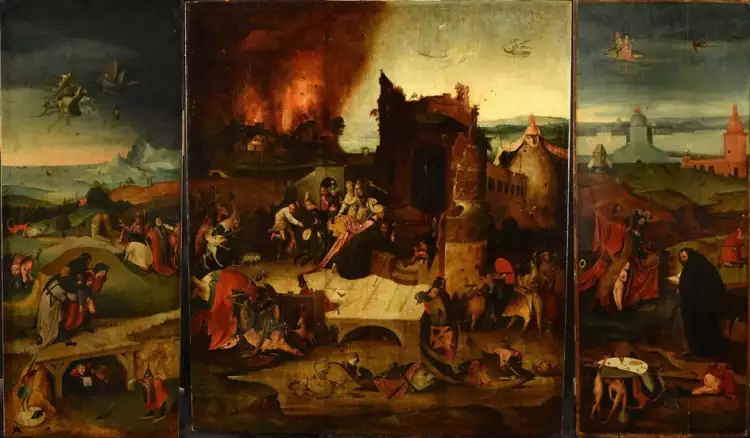 Hieronymus Bosch. Triptych The Temptation of St Anthony, 1505-1506
Hieronymus Bosch. Triptych The Temptation of St Anthony, 1505-1506
On the left panel, St. Anthony is depicted twice: in flight and in a fall. A group of demons attacks him in the sky. With his hands folded in prayer, he demonstrates unwavering faith, paying no attention to the fox with a whip, the frog with wings, or the water creature with a flying fish, symbolizing sinfulness.
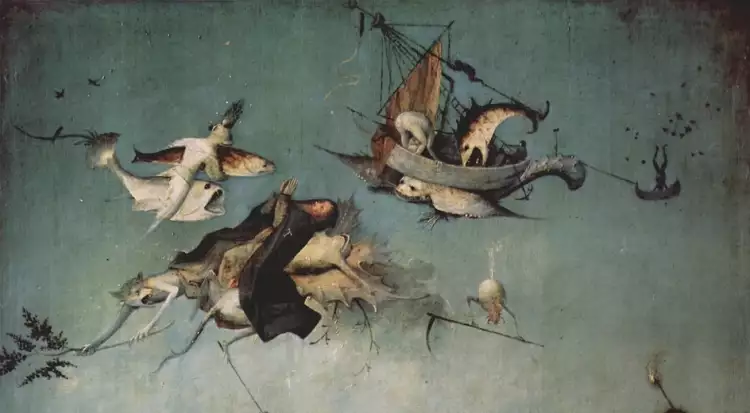 Hieronymus Bosch. Fragment of The Temptation of St Anthony (top left-hand panel), 1505-1506
Hieronymus Bosch. Fragment of The Temptation of St Anthony (top left-hand panel), 1505-1506
At the bottom, the viewer sees the tormented saint after his fall to the ground. Two monks and a layman help the immobile saint to cross a bridge. But even here, Anthony faces temptations of sin. An unholy procession, led by a demon dressed as a priest and riding a deer, is heading towards a cave, presumably a brothel, with the entrance passing between the legs of a person on all fours. On the frozen surface of the lake under the bridge, three monks gather, reading a letter. A bird-like demon skates towards them, carrying a message that Bosch intentionally made resemble an indulgence.
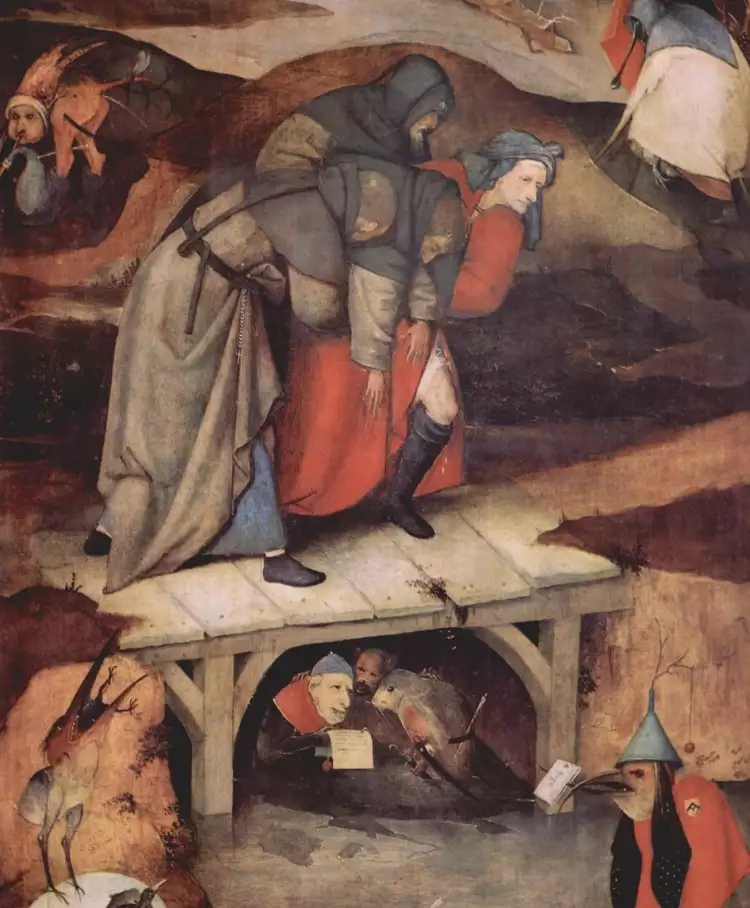 Hieronymus Bosch. Fragment of The Temptation of St Anthony (bottom left-hand panel), 1505-1506
Hieronymus Bosch. Fragment of The Temptation of St Anthony (bottom left-hand panel), 1505-1506
In the central part of the artwork, a scene of a black mass unfolds, abounding in apocalyptic imagery. Women conduct the service, which in itself was considered blasphemy in those times. A musician with a boar's head hurries towards them, with a cripple clinging to his cloak. St. Anthony kneels on the steps of a collapsing tower. His strength was not enough to protect the city engulfed in flames in the distant background. However, he maintains his faith and points the viewer to a dark room with a miniature crucifixion of Christ.
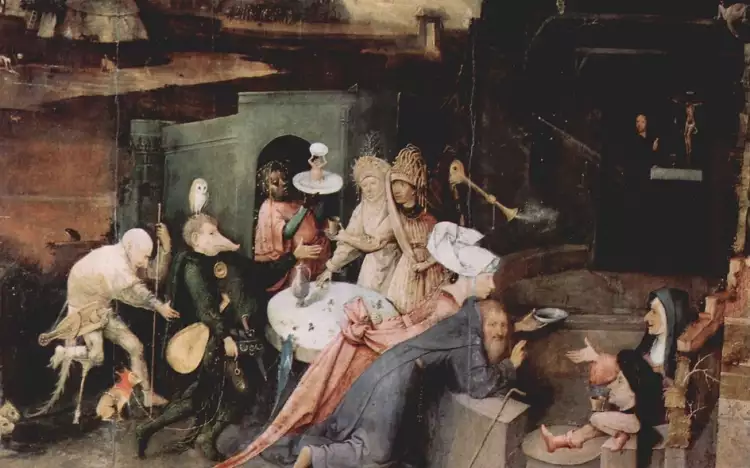 Hieronymus Bosch. Fragment from the centre of The Temptation of Saint Anthony, 1505-1506
Hieronymus Bosch. Fragment from the centre of The Temptation of Saint Anthony, 1505-1506
The right panel is also filled with distressing images: two figures riding a fish in the sky, and on the ground, a scene of gluttony unfolds with demons supporting a table with bread and a pitcher with their naked bodies.
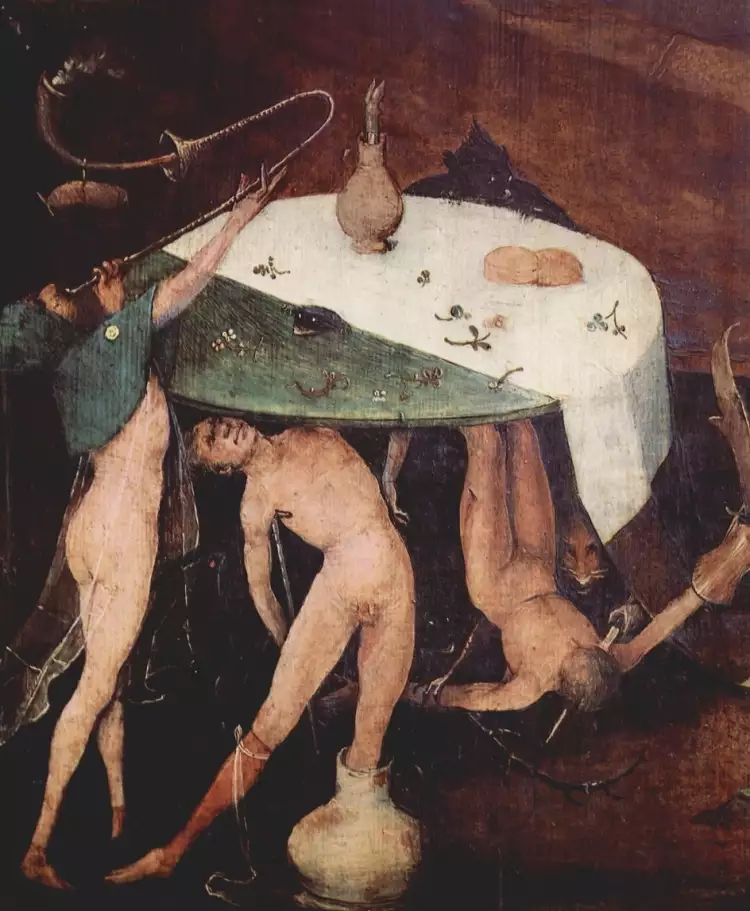 Hieronymus Bosch. Part from the right panel of The Temptation of Saint Anthony, 1505-1506
Hieronymus Bosch. Part from the right panel of The Temptation of Saint Anthony, 1505-1506
In the central part of the right panel, a naked woman emerges from a tree in an attempt to capture St. Anthony's attention, but the righteous man remains indifferent to the seductive spectacle. He holds the Holy Scriptures in his hands, demonstrating the strength of his faith and instilling hope for the victory of good over evil.
- Title of the painting: "The Temptation of Saint Anthony" (Dutch: Verzoeking van de heilige Antonius).
- Artist: Hieronymus Bosch (1450-1516).
- Year of creation: 1505-1506.
- Size: 131.5 x 225 cm.
- Style: Northern Renaissance.
- Genre: Religious genre.
- Technique: Oil painting. Alla prima. Grisaille.
- Material: Wood.
- Location: National Museum of Ancient Art, Lisbon, Portugal.
Hieronymus Bosch, also known as Jeroen Anthoniszoon van Aken, was a Dutch Renaissance artist, one of the most enigmatic and original masters in world painting, whose creative career spanned the second half of the 15th to the early 16th century. His works are based on proverbs, whimsical allegories, and bold observations of life. The master's paintings are filled with elements of satire and reflect a unique world with frightening images of demons and sinners.
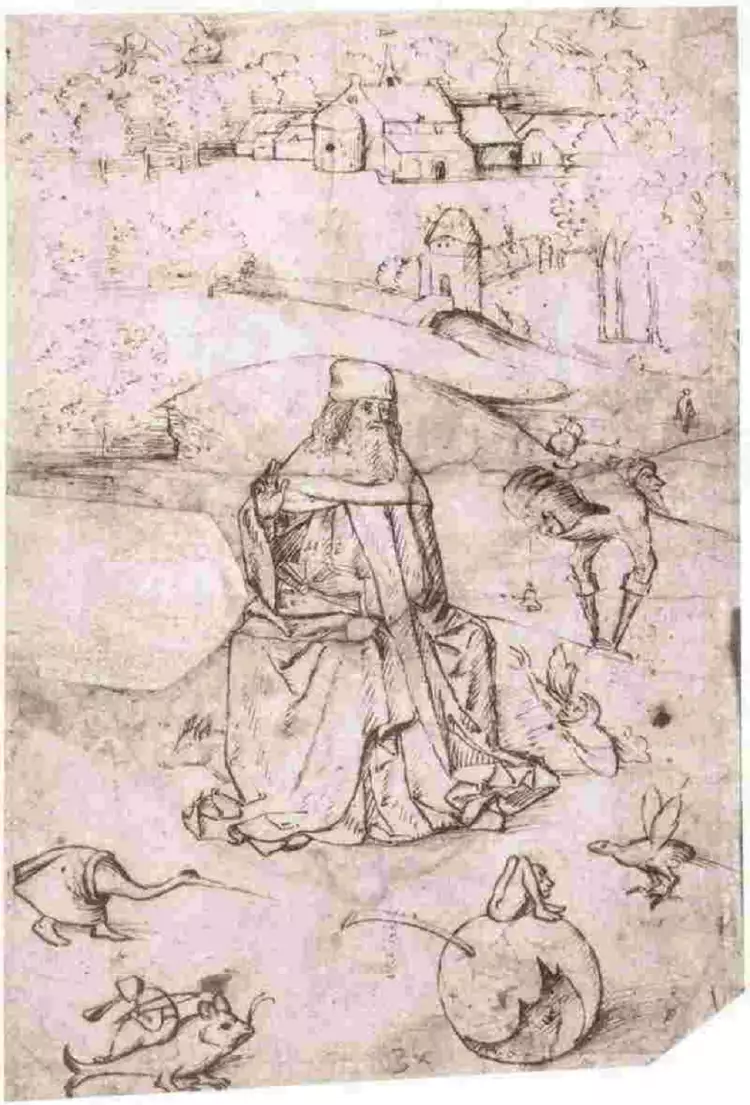 Hieronymus Bosch. The drawing The Temptation of Saint Anthony, circa 1500
Hieronymus Bosch. The drawing The Temptation of Saint Anthony, circa 1500
The theme of the temptation of saints was one of the main subjects in Bosch's work. The artist was inspired by the hagiography of Saint Anthony, a desert hermit, written by Athanasius of Alexandria, one of the fathers of the Greek Church. Based on this work, the master created several paintings.
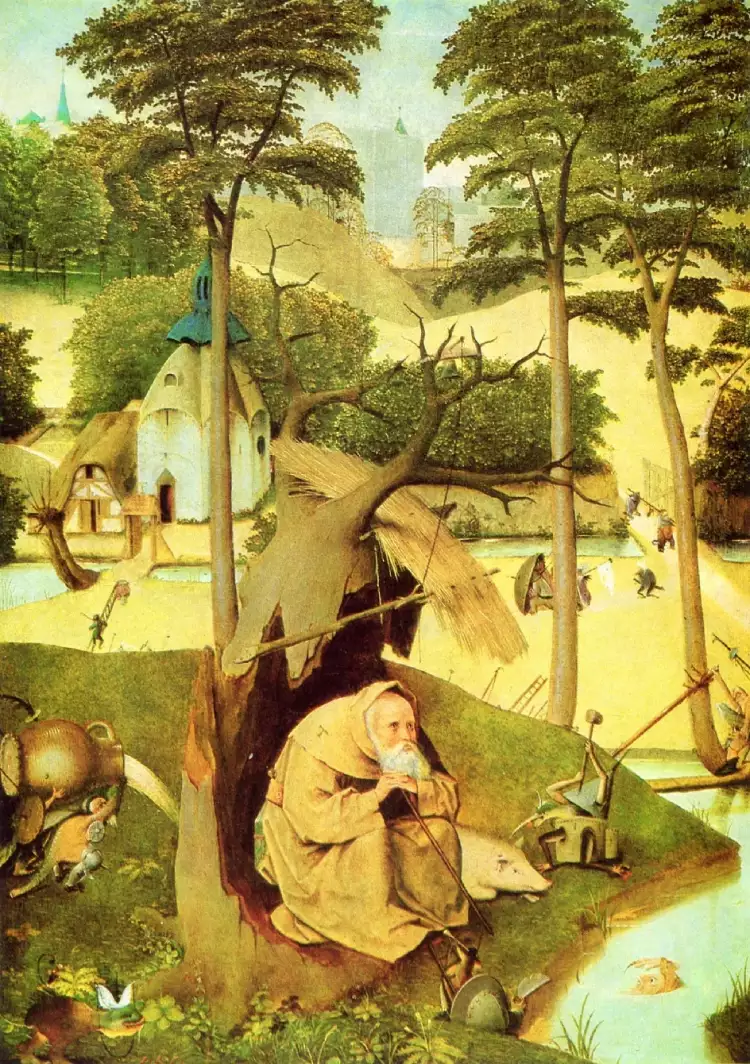 Hieronymus Bosch. The painting The Temptation of St. Anthony, 1510
Hieronymus Bosch. The painting The Temptation of St. Anthony, 1510
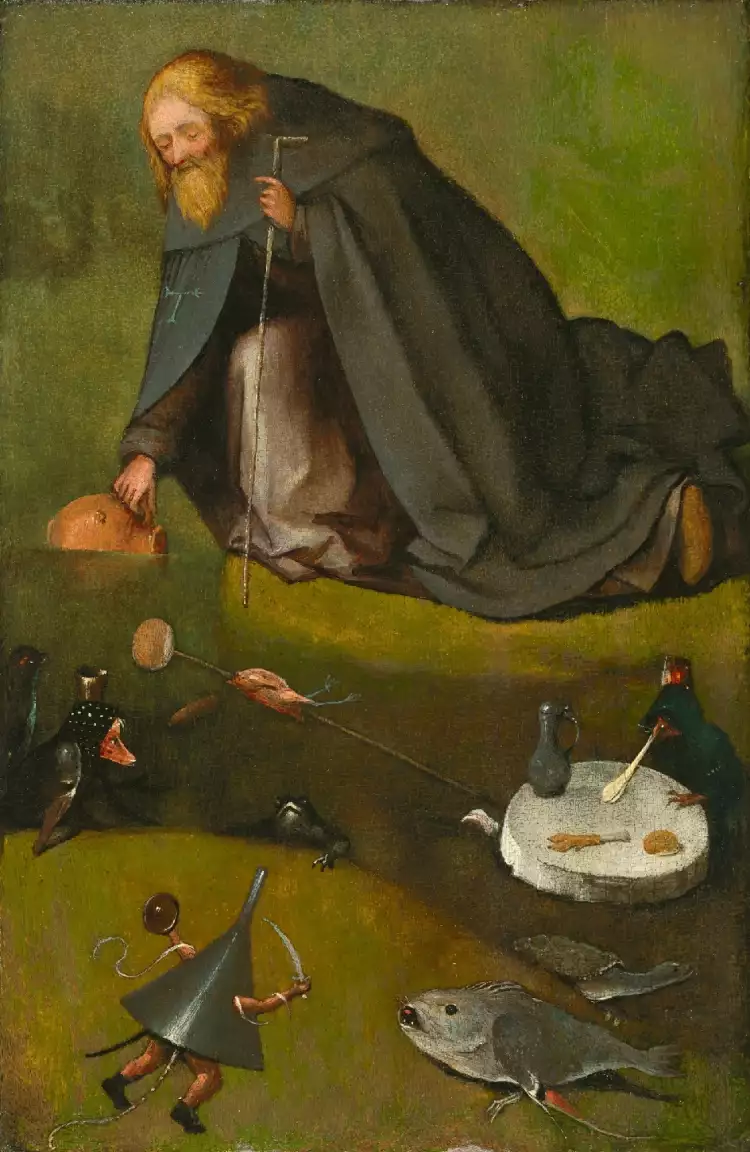 Hieronymus Bosch. The painting The Temptation of St. Anthony, circa 1510
Hieronymus Bosch. The painting The Temptation of St. Anthony, circa 1510
The inner part of the triptych was painted using the alla prima technique, while the scenes from the life of Christ were depicted in grisaille, a monochromatic painting close to drawing. Such a contrast in color between the inner and outer surfaces was in line with the tradition of creating altarpieces that were closed during Lent.
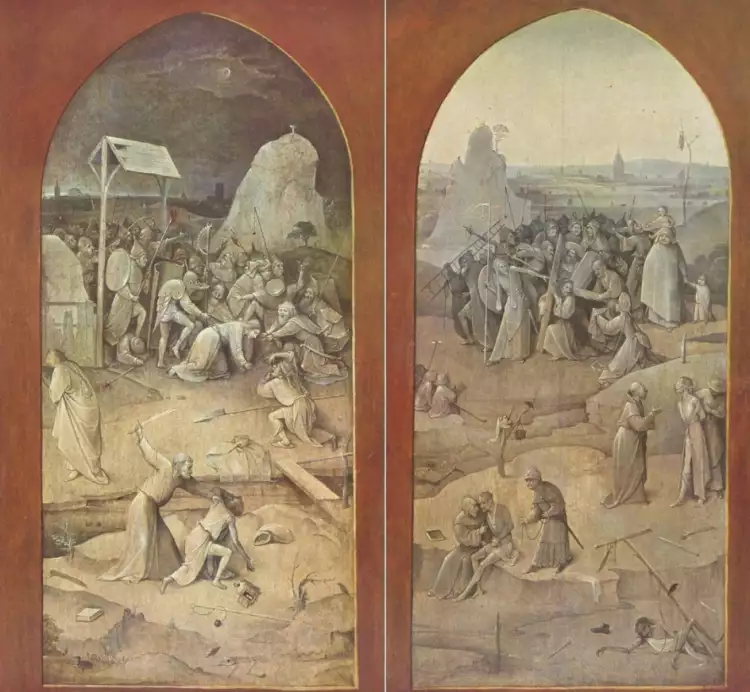 Hieronymus Bosch. The outer panels of the triptych The Temptation of Saint Anthony, 1505-1506
Hieronymus Bosch. The outer panels of the triptych The Temptation of Saint Anthony, 1505-1506
Hieronymus Bosch's painting "The Temptation of Saint Anthony" reflects the unique style of this original master. Unfortunately, over time, the meanings of many symbols embedded by the author have been lost. However, these works filled with apocalyptic imagery became precursors to surrealism, serving as a source of inspiration for many painters, including Salvador Dali, and influenced the course of art history.
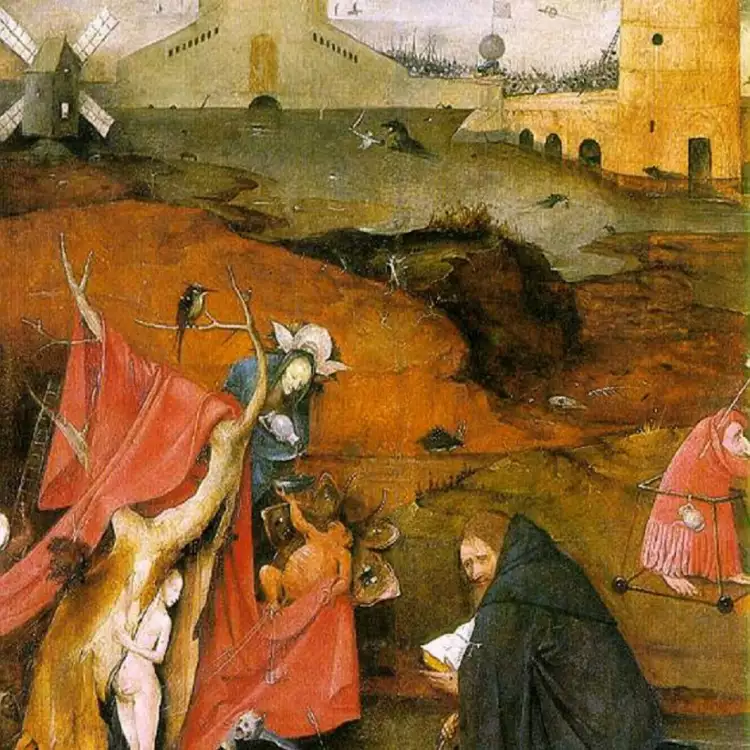
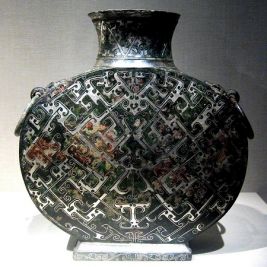 Inlaying - the enchanting art of unique ornaments
Inlaying - the enchanting art of unique ornaments 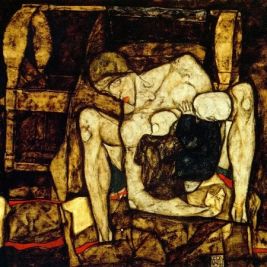 The painting "The Blind Mother" by Egon Schiele is a reflection of the artist's complex relationship with his own mother
The painting "The Blind Mother" by Egon Schiele is a reflection of the artist's complex relationship with his own mother 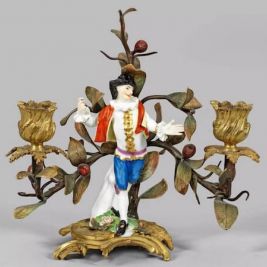 Schloss Ahlden: 190. Internationale Kunstauktion - Teil III
Schloss Ahlden: 190. Internationale Kunstauktion - Teil III 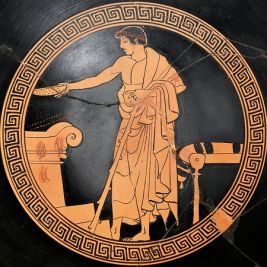 The art of Ancient Greece is an endless source of aesthetic pleasure for descendants
The art of Ancient Greece is an endless source of aesthetic pleasure for descendants  Illuminating the Past: The Rise of Vintage Lighting in Modern Decor
Illuminating the Past: The Rise of Vintage Lighting in Modern Decor 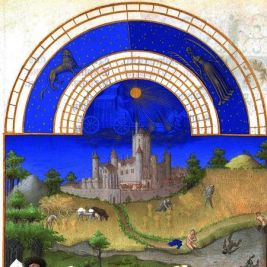 Gothic - the mystical art of the Middle Ages
Gothic - the mystical art of the Middle Ages 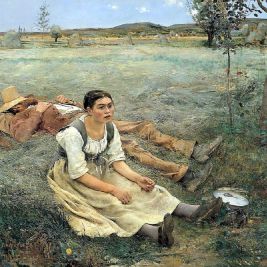 Naturalism in Painting: Naturalness and Photographic Accuracy of Reality
Naturalism in Painting: Naturalness and Photographic Accuracy of Reality 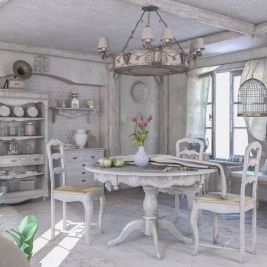 Interior design refers to the internal space of rooms: styles of decoration, classification, and characteristics
Interior design refers to the internal space of rooms: styles of decoration, classification, and characteristics 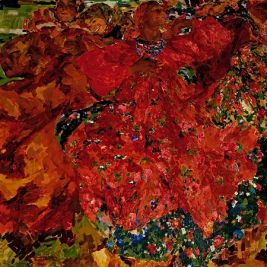 The painting " The Whirlwind" by Filipp Andreevich Malyavin is an inspiring hymn to the beauty and strength of character of Russian peasant women
The painting " The Whirlwind" by Filipp Andreevich Malyavin is an inspiring hymn to the beauty and strength of character of Russian peasant women 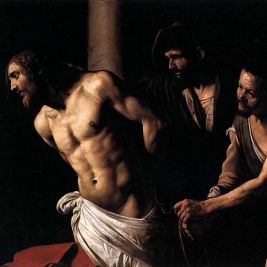 Caravaggism: The Struggle of Light and Darkness
Caravaggism: The Struggle of Light and Darkness